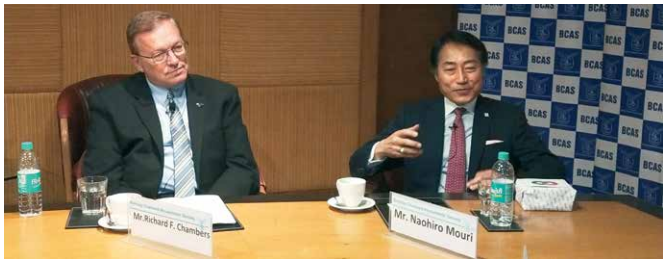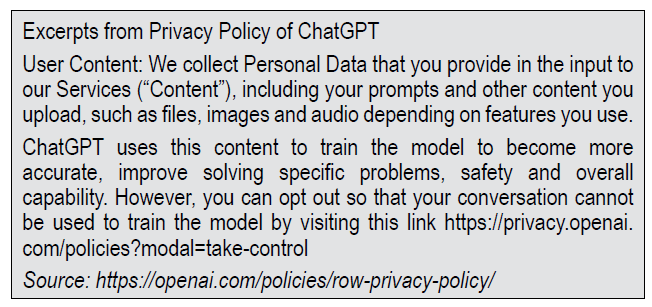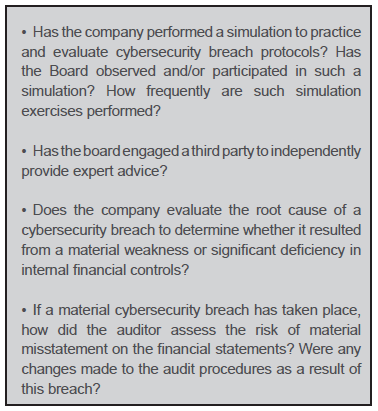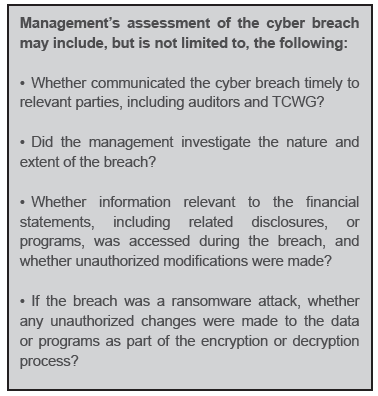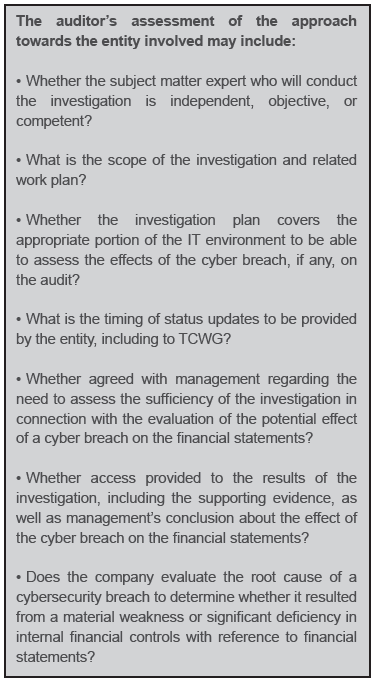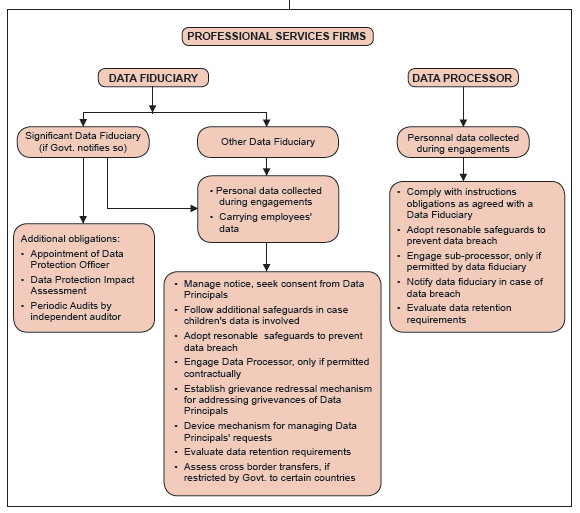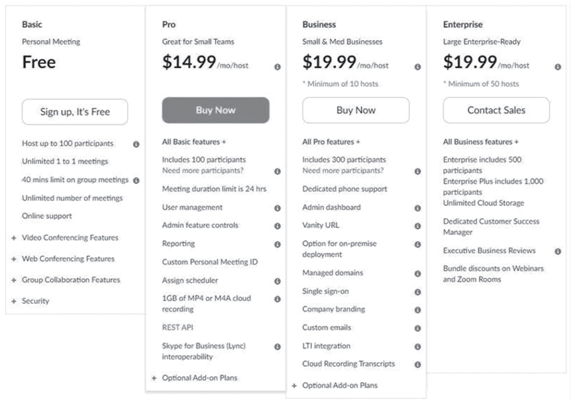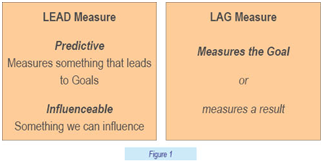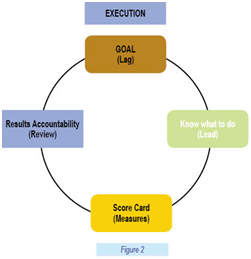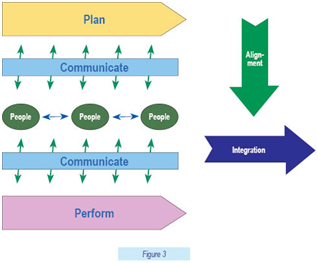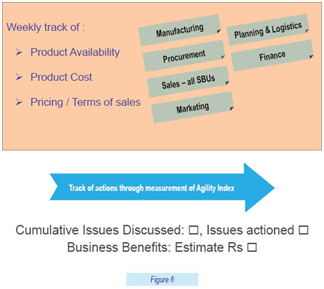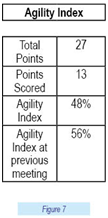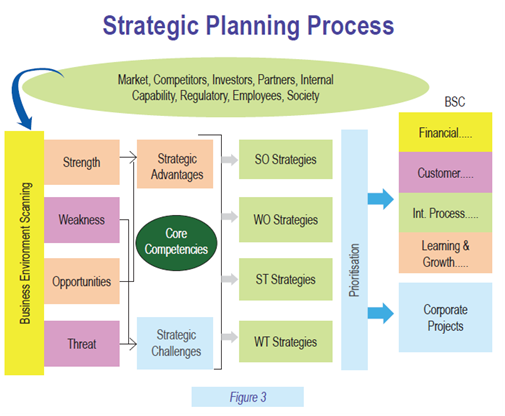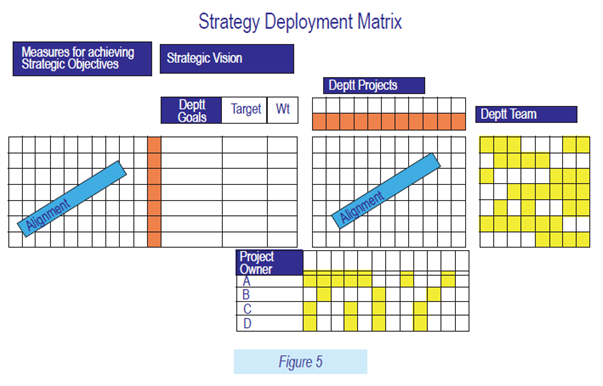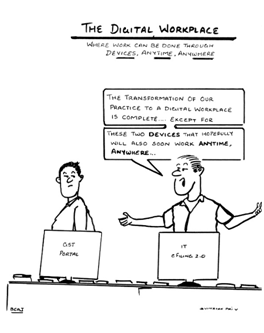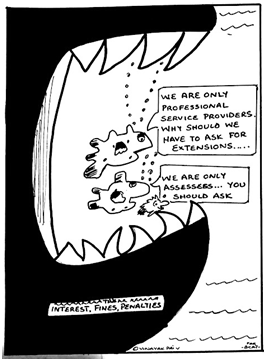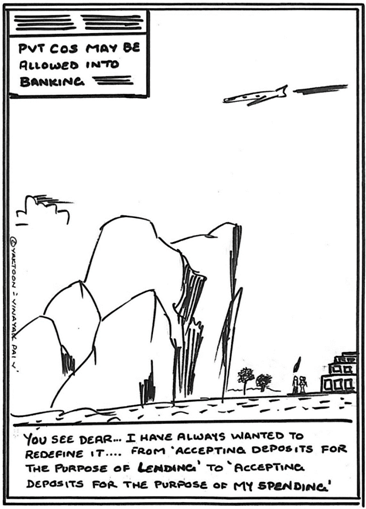We live in
an era of profound change. While change is inevitable, the continued success of
individual accounting firms is not. To cope with an increasingly turbulent
environment, firms need to develop new strategies that are better adapted to a
modern marketplace.
Change is
arriving from many sources, and its pace is accelerating. One way to measure
this acceleration is to examine the half-life of knowledge — how long it takes
for half of humanity’s knowledge to be supplanted by new information.
For much of human history, this
half-life could be measured in hundreds of years. By the 1920s, the
half-life of knowledge was 35 years. In the 1960s, it was 10 years. By 2000, it
was down to 5 years. Today, it is estimated to be about 2.5 years, and experts
expect it to continue dropping.
Change can come from many
directions, as well. For instance, a simple change in the threshold that
triggers mandatory audits can decimate demand. And international competition,
deregulation and new business models can dramatically impact entire industries.
The winds of political change are often unpredictable.
Technology, of course, is a primary
agent of change. It has already made real-time communications inexpensive and
almost universal. Artificial intelligence can do your taxes and keep the books.
There is even speculation that block-chain transactions may replace the need
for required audits.
Demographics also drive change. The
workplace is steadily being taken over by individuals who have grown up with
digital technology. These digital natives have different life experiences and
expectations than the generation they are replacing in the workforce.
In this article, we will identify
emerging global marketplace trends that are most likely to impact Chartered
Accountancy practices. We will then identify specific strategies and tactics
that are effective today — and should continue to work for the foreseeable
future — at accelerating the growth and profitability of accounting firms
around the world. We believe that these proven strategies provide a practical
template for the firm of the future.
Market
Trends Shaping the Future of Accounting
While many forces are shaping
accounting’s future market environment, some carry more weight than the others.
We’ve identified five emerging market trends likely to have the biggest impact
on the industry.
1. The
commoditization of routine professional services
There was a time when Chartered
Accountants were rare. Fees were stable and relatively high, even for widely
used services such as tax and audit.
But over time, many of these
services became widely available as accounting practices proliferated. In
addition, lower-cost alternatives, such as tax filing software, entered the
marketplace.
These innovations exerted downward
pressure on fees. Today, services are increasingly viewed as commodities and
providers as interchangeable. In this scenario, the only selection criteria of
significance are cost and payment terms.
How do we remedy this race to the
bottom? The answer is expertise. Figure 1
shows the relationship between the level of perceived expertise and the billing
rates clients are willing to pay. It is anchored at US$100 for a professional
of “average” expertise. The results show that the higher the level of
expertise, the more clients are willing to pay.
Figure 1. Relative hourly rates buyers will
pay, by Visible Expert level1
________________________________________________________________________________________________________________________________________________________________
1. Source: The Visible Expert,
2014, p. 42, https://hingemarketing.com/library/article/the-visible-expert

2. The
expectation of full transparency
Today’s consumers expect complete
transparency, a trend that is driven by people’s daily experiences online. An
individual can go online and find ratings and reviews for everything from
restaurants and movies to cameras and cars, and — for better or for worse —
this crowd-sourced phenomenon is now being applied to professional services.
Buyers have begun to expect that they will be able to use websites, online
tools and social media to understand a firm’s services and approach, as well as
assess its strengths and weaknesses. If buyers aren’t able to find information
on a firm relatively quickly, they often move on.
In fact, a recent study of referrals
showed that over half (52%) of the prospects receiving referrals ruled out a
firm they were referred to before even talking with them. The most
common reason cited for ruling out a firm was that its website or online
presence did not adequately demonstrate how the firm could help the buyer.2
____________________________________________________________________________________________________
2. Source: Referral Marketing
for Professional Services Firms Research Report, 2015, p. 14,
https://hingemarketing.com/library/article/referral-marketing-for-professional-services-firms
3. Specialized
expertise is assumed
Today’s sophisticated buyers have
come to expect that for any given problem they have they will be able to find a
specialized solution — and more often than not this solution can be found
online. From personalized services to downloadable apps, these solutions come
in many guises.
The same should apply to
professional services. If a company has a business challenge, it should easily
be able to find a firm that specializes in solving that specific problem.This
tilt towards specialists is already happening in the marketplace. In our recent
study of accounting firms, we found that specialists grew twice as fast as
generalists (see Figure 2).3
Figure 2. Median growth of generalist and
specialized accounting & financial services firms

_______________________________________________________________________________________________________
3 Source: Accounting & Financial
Services Research, 2017, p. 10,
https://hingemarketing.com/library/article/2017-accounting-financial-services-research-summary-marketing-growth-insights
4. Expert
advice is freely available
Have a question? Want to research a
business issue? Free advice from a
knowledgeable expert is only a few clicks away — whether it is a blog post,
webinar, video or whitepaper.
We live in an age when professional
services buyers expect to be able to educate themselves for free on any
business issue they encounter. If a firm fails to meet this expectation, one
of its competitors will. A firm’s ability to develop and promote educational
content is important because when buyers are ready to hire a new firm, they
often will think first of the experts they have come to rely upon for the
information they need. Feeding prospective clients’ ongoing need for
information is a new and powerful way of building competitive advantage.
The power of this approach is nicely
demonstrated by a recent study of referrals. This study compared several of the
most common approaches to generating more referrals.
Figure 3 shows the probability of
receiving a referral based on each technique.4 Note that visible
expertise (i.e, sharing your expertise in an educational context) was the most
powerful approach — far more powerful than a referral from a client or a
friend.
_______________________________________________________________________
4. Source: Referral
Marketing Study, 2016, p.9, https://hingemarketing.com/library/article/referral-marketing-study
Figure 3. Factors that increase the
probability of referrals

Figure 4 shows how referral sources
learn about a firm’s expertise5. Note how many of the activities in
this figure are ways of sharing knowledge and educational content.
Figure 4. How referral sources discover experts

_________________________________________________________________________
5 Source: Referral
Marketing for Professional Services, 2016, p.11,
https://hingemarketing.com/library/article/referral-marketing-for-professionalservices-firms
5. A
time-pressured marketplace moves online
“I want what I want and I want it
now” could well be the rallying cry of today’s overworked business
professional. Psychological studies have shown that managerial and professional
positions are among the most stressful and time pressured. And in many (perhaps
most) cases, these are your potential clients. No wonder they value getting
fast answers to their business questions.
Of course, there is no better medium
to satisfy this need for speed than the internet. Social media is faster than
face-to-face networking. And online search takes only a few seconds. “Faster”
and “easier” are very appealing concepts to prospective clients. As a result,
the business advantage of having a robust online presence is clear.
So what is the likely result of
these changing marketplace expectations?
Winners
and Losers in the Emerging Marketplace
If there is one clear consequence of
these emerging trends, it is this: there will be winners and losers. Some firms
will adapt to the changing marketplace and settle into market niches in which
they can grow and prosper. Other firms will ignore the changes around them.
Many firm principals believe (or hope) that these market forces will not affect
their clients, and they continue to rely on “tried-and-true” business
development techniques that have worked for them in the past.These firms are
not likely to thrive much longer.
This sorting into winners and losers
is not just a theoretical possibility. It is already well under way. Almost 10
years ago, my agency identified a group of firms that consistently outperformed
their peers on almost every measure of financial performance. We call them High
Growth firms.
High Growth firms grow five to ten
times faster than their average-growth peers, and this growth does not come at
the expense of profitability. According to our most recent study, High Growth
firms are twice as profitable as their peers. And they achieve this performance
while spending no more on marketing than their slower-growing competitors.6
___________________________________________________________________________________________
6. Source: 2017 High Growth
Study, p. 10-11,
https://hingemarketing.com/library/article/2017-high-growth-research-study-research-summary
Far more often than not, firms that
achieve these levels of growth and profitability have a clear strategy that
gives them a competitive advantage. They also tend to receive much higher
valuations when they are acquired or merge with another firm.
One study of firm value showed that
High Growth firms receive valuations of multiples up to 10 times higher than
average.7
How are these firms able to
accomplish this impressive growth in the face of a turbulent, highly
competitive global business environment?
___________________________________________________________________________
7. Source:
Top Dollar: How to Achieve a Premium Valuation for Your Professional Services
Firm, 2008, p. 8,
https://hingemarketing.com/library/article/high_growth_professional_services_firm_how_some_firms_grow_in_any_market
In our attempt to answer this
question, we have learned that there are certain principles and practices that
allow these firms to adapt quickly to emerging marketplace changes. While every
firm faces different business and market challenges, there are some practical
approaches that seem to cut across industries, markets and cultures. We explore
these approaches in the next section.
Becoming
the Firm of the Future
There is no single technique or
business strategy that guarantees future success. But our research has
uncovered several practices that significantly improve a firm’s ability to
align its business approach with the needs and expectations of an evolving
marketplace. Below are six strategies that a firm can begin using today to
prepare for the uncertainties of tomorrow.
1. Create a Culture of Learning and
Change
The biggest barrier to building the
firm of the future often lies between our ears. Fear of change and a desire to
minimize risk by avoiding the new and untested can blind us to the implications
of an evolving world. Instead of seeking to understand the change around us and
embracing it, many firms look to others in the accounting industry for
leadership and inspiration. They model their approach to business development,
marketing and operations after competitors whom they admire.
While such apparent caution may seem
less risky, it is in fact very dangerous. It will erode any competitive
advantage a firm has developed, stifle innovation and prevent a firm from
recognizing and serving emerging client needs.
A far safer course is to be
proactive and monitor the evolving marketplace. Equipped with this knowledge, a
firm can develop services and strategies that address emerging client needs
long before competitors catch on. In the next section, we will explore how to
achieve this level of market insight.
Before firms retool their marketing,
however, they must develop a firm culture that supports learning and change. One
way a firm can make learning an integral part of its culture is to implement a
training schedule. For example, one of our clients — an international law
firm based in Mumbai — devotes one hour each workday morning to formal
training. While this level of training may sound excessive (and it probably
isn’t necessary at most firms), it sends a powerful message to potential
clients and employees.
Another way firms can foster a
culture of ongoing change is to adopt a practice of continually introducing and
testing new services. We call this the Test–Measure–Learn cycle. When they assume this mindset, employees realise that innovations and
improvements are inherently uncertain and must be tested and refined.
Figure 5. The Test–Measure–Learn cycle

For example, suppose you have an
idea for a new service that helps clients use financial information to improve
operational efficiencies. You start the cycle by testing the idea and measuring
the results. Did it work as expected?
What were the unanticipated results?
Over time, your accumulated insights allow you to learn from that experience
and apply that learning to your next test. Each successive iteration should add
value or reduce cost.
While some individuals may follow
this pattern instinctively, we find that most do not. Introducing a
Test–Measure–Learn policy makes learning and continual improvement a part of
the culture. Firms that institute this kind of process find that uncertainty is
less daunting and their approach to the marketplace becomes more flexible and
adaptable.
2. Research
Based Marketplace Insights
Perhaps the biggest challenge in
becoming a firm of the future is finding a way to discover clients’ changing
needs and business priorities. Their industries, after all, are facing their
own risks and opportunities. So you should try to understand those first. The
problem is that most professionals feel as though they already know their
clients and their business challenges. However, this belief is an illusion.
As humans, we have blind spots. We
think we understand something when we, in fact, do not. Our clients don’t
always communicate their true feelings or concerns to us. And we bring our own
histories and motivations to every interaction. The net result is that almost
every firm operates with dangerously flawed assumptions about what clients want
and how they think about critical business issues.
The antidote for this problem is
research. Firms that conduct systematic research on their target client group
have a more objective view of their challenges and priorities. They are able to
base their decisions on empirical evidence rather than assumptions or
instincts. It equips them to anticipate trends and offer highly relevant new
services. In short, research reduces risk.
This effect is powerful: firms
that conduct formal research on their target client group grow faster and are
more profitable. In a recent study we found that 34% of High Growth firms carry
out systematic client group research at least each business quarter. None
of their slow-growth peers did similar research.8
_______________________________________________________________________________________________________________
8 Source: 2017 High Growth
Study, p. 17, https://hingemarketing.com/library/article/2017-high-growth-research-study-research-summary
Figure 6. Percent of firms, by type, that
conduct frequent research (quarterly or more often)

3. A
Focused Strategy
The firm of the future will benefit
from a narrowly focused strategy. In a turbulent environment, the firm that
tries to be everything to everyone is likely to discover that it is nothing
special to anyone.
We’ve already seen this effect in
play — buyers favour specialists over generalists. While it may seem intuitive
that offering more services to more audiences creates greater opportunity for
growth, the opposite is true. The more a firm broadens its appeal, the bigger
its pool of competitors grows and the more difficult it becomes to stand out to
prospective buyers.
So how do firms establish
competitive advantage? By offering superior client service? In fact, this is a
very popular strategy, used by two thirds of firms today. Unfortunately, it
doesn’t work. Firms that attempt to differentiate themselves on superior
client service actually grow 250% slower than firms that employ other
differentiators.
Keeping in mind that every firm
operates in its own competitive environment and needs its own strategy, there
are a few differentiators that consistently work better than others. One approach
is to offer a niche service. Firms that take this approach are 25% more likely
to be High Growth firms. Another proven differentiation approach is to
specialize in an industry. These businesses are 89% more likely to become High
Growth firms.
Why are these niche approaches so
effective? We’ve identified three reasons:
First, having a niche allows a firm
to be more visible to its target audience. When an audience is smaller, it is
easier and less expensive to reach them.
Second, firms that specialize are
more likely to be perceived as top experts in their field. Top experts are able
to close business more quickly, are less likely to offer commoditized services
and can charge premium fees.
Third,a niche firm’s smaller,
well-defined market makes it easier to understand and monitor its market. As a
result, these firms are well positioned to introduce innovative solutions as
their clients’ needs evolve.
4. An
Expertise Centered Brand
Perceived expertise is critical to
the future success of accounting firms. According to our research, expertise is
the number one selection criteria when prospective clients seek out a firm to
hire. Even more impressive, in nearly three out of four searches (72%)
expertise is the factor that tips the scale in favour of the final choice.
As evolving technology and
increasing global competition push more traditional accounting services into
the commodity category, expertise will become the primary way that the firm of
the future will compete.
But there is a problem with
competing on expertise. Expertise is invisible. A buyer cannot assess
expertise by looking at or meeting a person. To address this problem, firms
have to find ways to make their expertise broadly visible to their target
client groups. The most effective way to build this visibility is to bring
their expertise directly to their audience, even before they are ready to buy —
by speaking at events, publishing educational articles and blog posts and
putting on free webinars, to name just a few common tactics.
Centering a firm’s brand on
expertise is not only effective today, it is a strategy that will contribute to
the firm’s future relevance and competitive advantage.
5. A Balanced Approach to Practice
Development
When reviewing Figure 4 above, you
may have noticed that referral sources learn about expertise in many ways. They
gather their information from a variety of offline (e.g., speaking engagements)
and online (e.g., blogging or social media) sources. In fact, firms that generate
leads from both online and traditional sources tend to grow faster and are more
profitable than those that solely rely on traditional sources. Our research
tells us that these firms can grow up to four times faster and be more than
twice as profitable than firms that follow an unbalanced approach.9
These firms are also better prepared for an increasingly digital future than
those that rely heavily on traditional business development techniques.
__________________________________________________________________
9. Source: Online Marketing for
Professional Services, 2012, p. 58,
https://hingemarketing.com/library/article/online_marketing_for_professional_services
6. A
Magnet for Top Talent
Professional services firms are only
as good as their talent. After all, it is their professionals’ expertise that
firms are selling. But many firms struggle
to attract and retain top talent. A lack of qualified job candidates can
severely limit a firm’s future prospects and put a ceiling on growth
For this reason, a firm would be
wise to invest in its employer brand: What is the firm’s reputation as a place
to work? Does the employer brand attract top talent or keep them away? Is it
consistent with the firm’s client-facing brand?
When building its employer brand, a
firm must first understand what job candidates are looking for in a firm. A
recent study on employer brands provides a few helpful clues. When asked what
they care about most, employees’ top response was to work with a growing firm.
Their next most common response was having the ability to work remotely or
telecommute. Interestingly, obtaining the highest available salary came in
third place.10
__________________________________________________________________________________________________
10. Source: Employer Brand Study,
p. 18, https://hingemarketing.com/library/article/employer-brand-study.
Firms must also understand that
generational differences will play a growing role in the war for talent. While
many of today’s leaders lament the changing expectations and priorities of the
rising generation (those born after 1980 and sometimes referred to as
Millennials), these young professionals open up many opportunities for the firm
of the future.
For example, Millennials are eager
to build personal brands in their industry. This ambition is completely
consistent with a firm’s goal to make its expertise more visible. And firms
that encourage the development of their experts’ personal brands may have a
recruiting edge when competing for this demographic.
Millennials are also adept at
representing the firm on social media, an advantage in a world that is tilting
steadily towards online communication. Characteristics that may be an
uncomfortable fit in today’s firm are likely to become valuable assets to the
firm of tomorrow.
A Final Thought
Building the firm of the future may
seem like an impossible task. The future is always uncertain, after all, and
the pace of change has never been faster. But there are compensating factors.
Times of great change can also produce great opportunities.
We can see some of these
opportunities already in the extraordinary growth enjoyed by firms that have
embraced emerging market realities and are leveraging new business strategies
and tactics. There will be winners and there will be losers in this race to the
future. Which path will your firm choose to take? _

